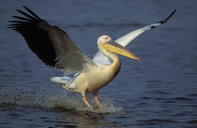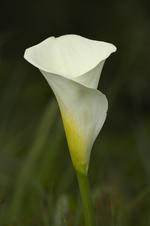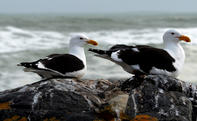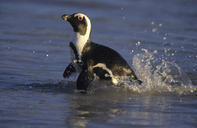Shipwrecks and Early History
Having read many a tale of Dassen’s shipwrecks and early history, I wanted to find some way of visiting the island. It’s a strictly controlled bird sanctuary and closed to the public.

But my persistent email enquiries to CapeNature finally bore fruit … and there I stood on the wharf in Yzerfontein one chilly morning, waiting for a ride to Dassen. I was joined by three conservationists who’d be my companions on the isle: Johan Visagie (manager of Dassen), his wife Leshia (who conducts avian research for the Department of Environmental Affairs, formerly MCM) and senior field ranger Johnny Witbooi.
The zodiac sped across a lumpy, grey sea. Everywhere were seals and seabirds in a riot of Atlantic life. ‘We’ve had a 20-kilometre pelagic-fishing exclusion zone around the island for two years,’ shouted Johan above the engines. ‘The results have been good. Bird populations are bouncing back.’
Johan has been doing long-term monitoring and breeding studies on the creatures of Dassen, particularly penguins. After bad oil spills, such as the sinking of the ore-carrier Treasure in 2000, it was important to implement measures to protect birds, and record how populations of birds have recovered.
Dominant Feature of Dassen

Other than Cape Nature’s few houses, the dominant feature of Dassen is its lighthouse, which rises 28 metres above a uniformly flat island. It was for long the most isolated manned light on the South African seaboard.
A white sand road runs from House Bay in the north down the centre of Dassen to the lighthouse complex at its southern tip. I’d chosen a bright, windless day to cross the island. The groundcover was rich, viridian green: moss, exotic nettles, succulents and geophytes. The banks of Arum lilies were so thick they looked like snow.
Everywhere in the soggy moors were sacred ibises, hadedas, blacksmith plovers, grey herons and Egyptian geese. In addition, Dassen is occasionally visited by distinguished guests from the deep south, like albatrosses, shearwaters and skuas. Birds most certainly ruled this island.
A green spiral staircase swept round the walls and up through a hole in the ceiling. With each succeeding compartment the tower narrowed. The island stretches out like a giant starfish to the north, surrounded by kelp beds. The walls around much of the perimeter, built to restrict penguins to the shore zone, making egg collection easier in the old days.
Bird Conservation

For CapeNature and DEA researchers, Dassen Island is all about bird conservation and the work never stops. Apart from daily monitoring, they conduct a census of prominent species five times a year: swift terns in February, penguins in May, white pelicans in September, kelp gulls in October and the extremely rare Leach’s storm petrels in December.
At the moment, African penguins are receiving particular attention. Dassen has traditionally been home to the world’s largest breeding colony, but numbers have fallen dramatically. Over the past five years, the population has declined from 25000 breeding pairs to just 5000. No-one is certain why, but an absence of fish, many of which have migrated round the Cape into the Indian Ocean to escape deoxygenated conditions on the West Coast, may be partly to blame. Closing the waters around the island to fishing has helped stabilise the numbers.
West Coast Treasures

On the last morning, the team invited me to join them on a penguin-monitoring sortie to check on current breeding success. We donned oilskins: this was going to be messy work. Johny brought along thick leather gloves as it was his job to separate parents from chicks and an angry penguin is not to be trifled with. They would snap and bray and try to wriggle free like pint-sized wrestlers, while Johan hauled the chicks out of their underground nests. Some were mere fluff balls. Leshia measured the head and flippers, while Johan took GPS coordinates.
Then it was time to weigh the tiny fellows. They were suspended from a hanging scale and looked for all the world like ungainly flying trapeze artists. Leshia passed one of the smaller chicks to me and I held it between my hands. The body was warm and the feathers as smooth as, down. It’s heart went pitter-patter against my palm.
Back on the mainland that afternoon, I thought of the little team I’d briefly got to know. CapeNature and the DEA are truly blessed with people on the ground like Johan, Leshia and Johnny. They were the guardians, protectors of precious places like Dassen. Poaching and the vagaries of government policy swirled above them like Atlantic storms, but they simply got on with the job. These were the frontline troops in the battle to save what remained of our West Coast treasures.
By Justin Fox
 The West Coast is an easy drive from Cape Town and the Winelands, and all you need do is head onto the N7. Villages such as Paternoster, Lan...
The West Coast is an easy drive from Cape Town and the Winelands, and all you need do is head onto the N7. Villages such as Paternoster, Lan... If endless unspoilt beaches, the big blue ocean, small fishing boats, snoek and crayfish are your thing, then Yzerfontein will seem like a m...
If endless unspoilt beaches, the big blue ocean, small fishing boats, snoek and crayfish are your thing, then Yzerfontein will seem like a m...